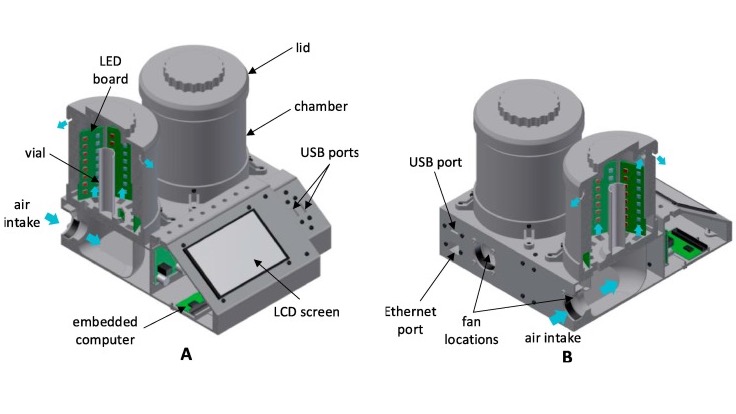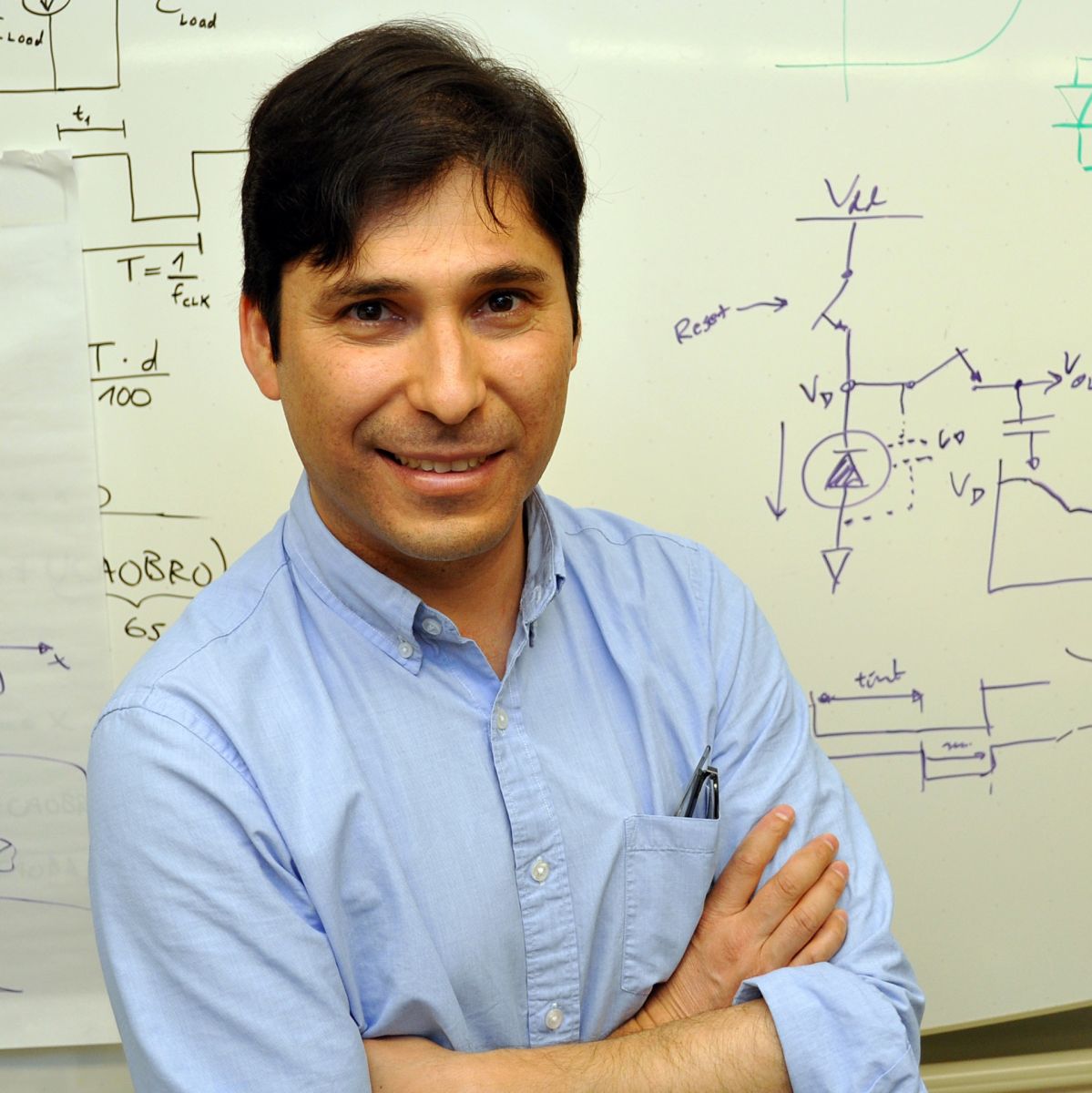
A few years ago, Vikki Weake, assistant professor in the Department of Biochemistry, and her research partner, Donald Ready, professor in the Department of Biological Sciences, began a project to learn about age-related diseases of the human eye, such as macular degeneration. For test subjects, the pair planned to use Drosophila, better known as fruit flies, in their study because flies reproduce quickly and have an estimated 75 percent of their genes in common with humans.
The tiny flies would be contained in small, transparent vials. The plan was to use an LED light, expose the vials of flies to different wavelengths of light, and then examine the flies’ eyes to see what effect the different intensities of light and exposure time had on younger flies compared to older flies. However, the team ran into a few problems. The small vials could contain only a few flies at a time. Furthermore, manually controlling the light intensity and exposure time of the light was a slow, tedious process.
 In order to complete their study, the team needed some sort of “contraption” to contain the flies and to deliver an exact amount of light for an exact period of time. Controlling the temperature emitted by the LED light also was important. If the temperature rose above 28 degrees Celsius, the flies could overheat and perish.
In order to complete their study, the team needed some sort of “contraption” to contain the flies and to deliver an exact amount of light for an exact period of time. Controlling the temperature emitted by the LED light also was important. If the temperature rose above 28 degrees Celsius, the flies could overheat and perish.
That’s when Daniel Leon-Salas, associate professor in Purdue Polytechnic’s School of Engineering Technology, became an unlikely member of a study on fruit fly blindness. “In the Polytechnic, we are very good at hands-on projects,” said Leon-Salas. “We enjoy building things, especially things that solve problems.”
Through trial and error, Leon-Salas successfully designed and built an automated, programmable, fruit fly containment system. He used a 3-D printer and laser-cut acrylic pieces to construct the device. It contains separate fly-holding chambers, which are larger and able to hold multiple vials. He embedded a computer to precisely control the amount and duration of light.
“There’s even a computer keyboard, but it’s a little smaller than the keyboards people use with desktop computers,” he said. “The device has opaque walls, so ambient light does not affect the flies. And there’s a clever mechanism that prevents light from reaching the stimulation chambers while allowing air to flow in and out, keeping the temperature inside from reaching critical levels.”
Leon-Salas’ contraption, known as the “Programmable Optical Stimulator for the Drosophila Eye,” could play a role in curing diseases. Fruit flies are used extensively in research — especially genetics research. Scientists who are trying to determine the genetic causes of diseases such as Parkinson’s, Alzheimer’s or ALS frequently use fruit flies as test subjects. Because of this, Leon-Salas has posted the construction plans for his fruit fly containment system — which took him two years to design — on the Internet as open-source hardware, available free of charge to everyone.
Additional information:
- A programmable optical stimulator for the Drosophila eye (ScienceDirect)
-
Fruit fly breakthrough may help human blindness research (Purdue News)
